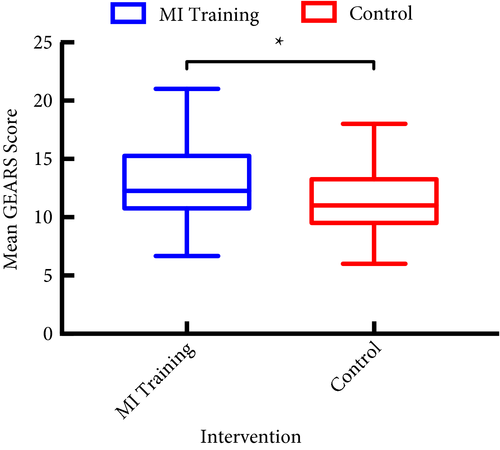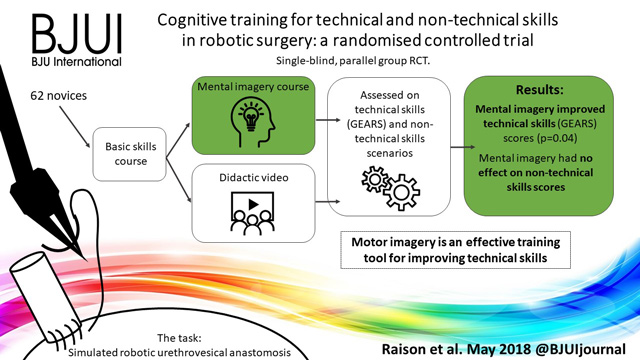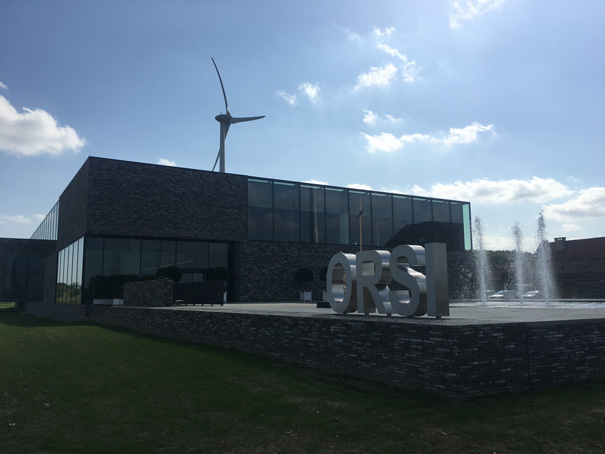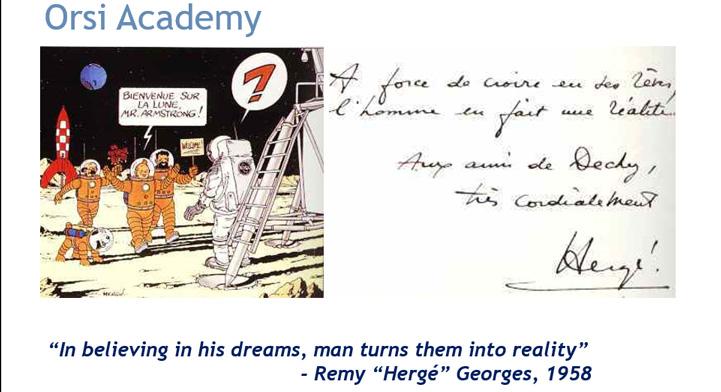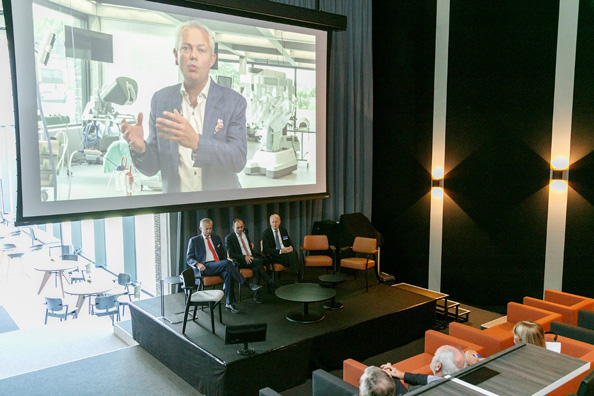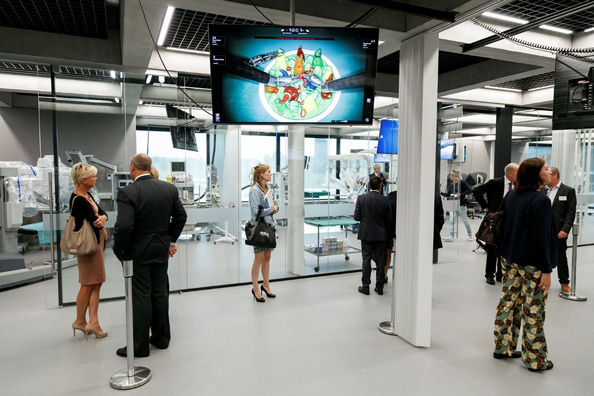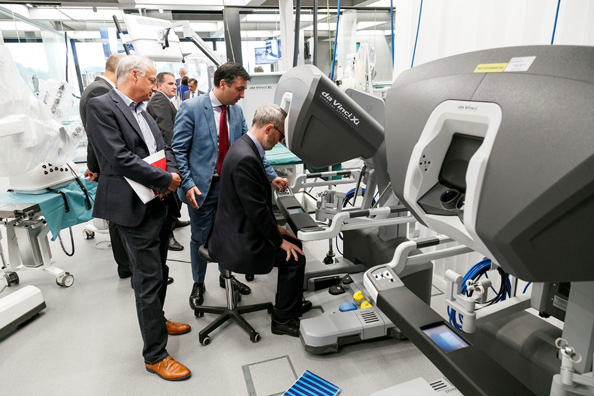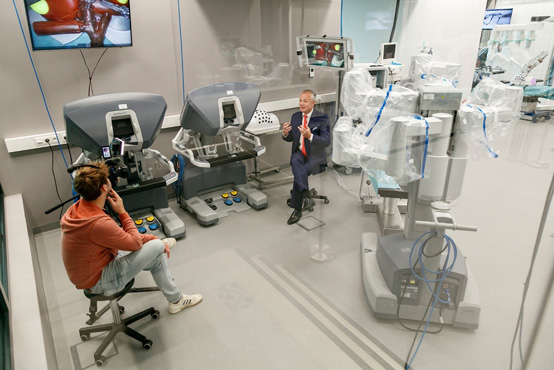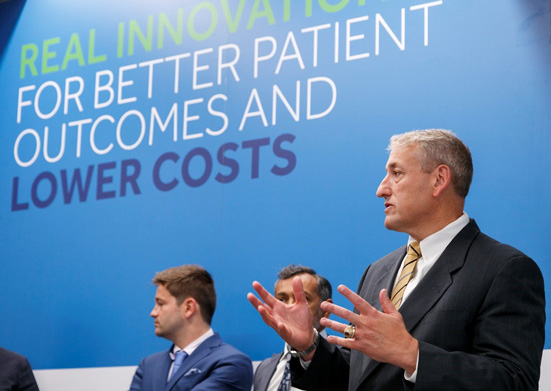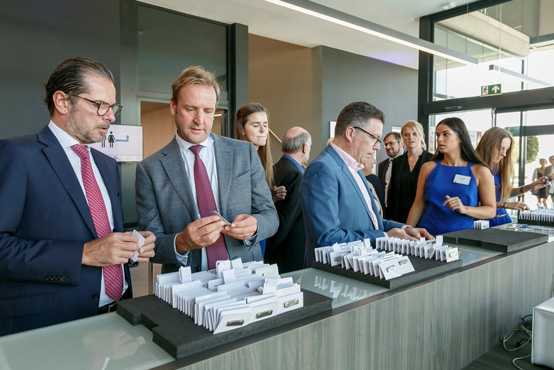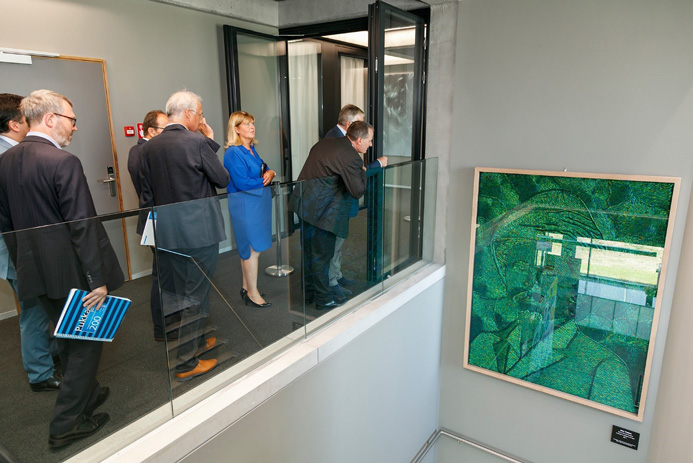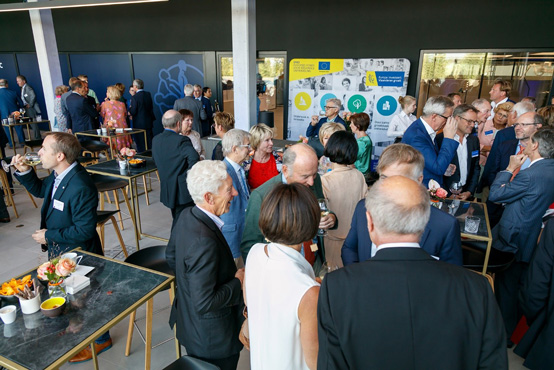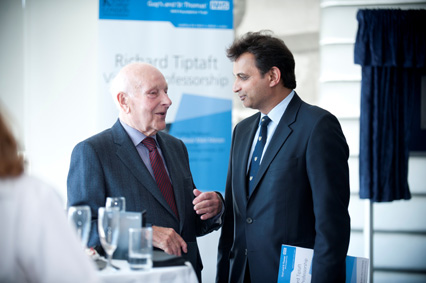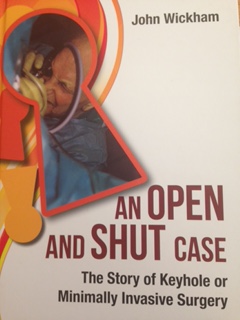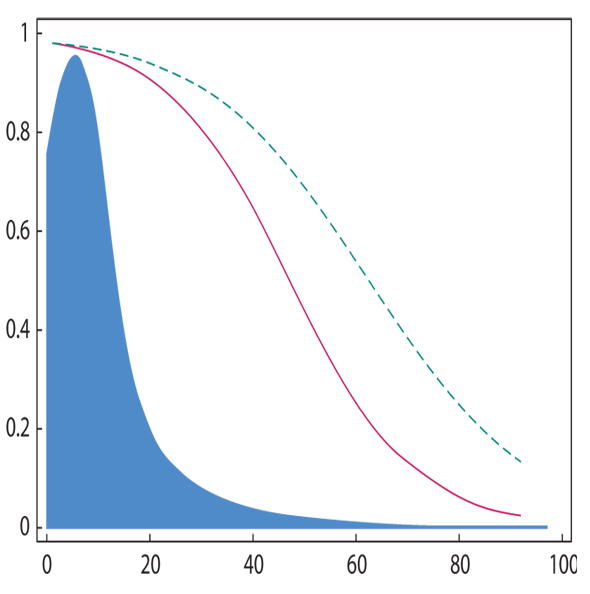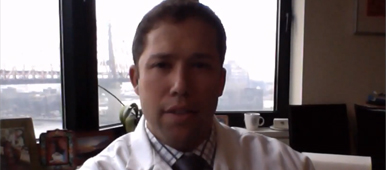Authors: Janet Colli, Gregory Mitchell, Benjamin R. Lee
Department of Urology, Tulane University, New Orleans, LA, USA
Corresponding Author: Benjamin R. Lee, Department of Urology, Tulane University, New Orleans, LA, USA. E-mail: brlee@tulane.edu
ABSTRACT
Objective
To describe use of a robotic-assisted laparoscopic partial nephrectomy technique utilizing the thulium laser for tissue welding without clamping the hilar vessels.
Materials and Methods
A Thulium laser at 30W and a 400 micron fiber placed through a robot arm to excise and achieve hemostasis during resection of renal masses. The masses were localized intraoperatively with a 10mm laparoscopic renal ultrasound probe. At no point during the procedure were the renal hilar vessels clamped. There was minimal blood loss during the operation. Following resection, the base of the tumor resection bed was oversewn with a running 2-0 Vicryl suture and secured with LapraTy clips. The renal capsule was then closed with 0 Vicryl over a Surgicel bolster together with Floseal for an additional degree of hemostasis.
Results
The robotic partial nephrectomies were completed without complication, with complete tumor excision confirmed by negative pathologic surgical margins. Final pathology demonstrated clear cell cell carcinoma. Patients were discharged on postoperative day 2, and have had no long term complications.
Conclusions
Partial nephrectomy continues to grow in application for treatment of T1 renal cell carcinoma. We present a technique for zero-ischemia robotic laser partial nephrectomy, which addresses current concerns focusing on renal ischemia during surgery.
INTRODUCTION
Widespread application of laparoscopic and/or robotic assisted partial nephrectomy has been limited by concerns regarding warm and cold ischemia limits during resection as well as technical performance. Currently, there is a lack of reliable means to achieve cold ischemia laparoscopically or robotically , and controversy persists as to the limits of warm ischemia before irreversible nephron death occurs. The ultimate goal is to develop a laparoscopic partial nephrectomy technique which allows bleeding to be controlled during the operation without the need to clamp hilar vessels, hence resulting in zero ischemia time and maximizing nephron preservation.
Over the past decade, several researchers have demonstrated laser partial nephrectomy without the need to clamp the hilar vessels in the animal model [1-3]. In 1998, the Nd:YAG laser was the first to be tested on a series of seven patients with small renal masses during laparoscopic partial nephrectomy without hilar clamping [4]. Since that time, reports have been published detailing operative experience from a series of five patients who underwent laser-supported partial nephrectomies without hilar clamping using open surgical techniques [5]. We describe a robotic assisted laparoscopic partial nephrectomy technique with laser tissue welding using a Thulium laser and robotic arm adaptor to induce parenchymal resection and minimize hemorrhage whereby the vessels are not clamped during resection. This technique was utilized in the care of two patients at our institution after approval by Tulane’s Institutional Internal Board Review committee.
CASE REPORTS
An incidental solid renal mass was discovered in a 55 year old male during an evaluation for vague abdominal symptoms. CT scan revealed a 2.5 centimeter peripherally located solid, enhancing, left renal mass. In similar circumstances, a left lateral 2cm renal mass was incidentally found in a 62 year old male. Both patients underwent robotic assisted left partial nephrectomies and we share our experience with laser tissue welding and present the salient points of the procedure.
A standard modified flank position with transperitoneal approach was used. Two 8 mm robotic trocars were placed and two assistant working ports were placed (one 5mm and one 12mm port). Location of the robotic trocars and working ports vary depending on the location of the renal mass (see Figure 1 for illustration of port placements).
Figure 1. Trocar Placement for Robotic Left Partial Nephrectomy
After docking the robot, a 30 degree robotic lens, focused down, was placed in the camera port, the Monopolar scissors were placed in the right robot port and the Prograsp forceps were placed in the left robot port. The white line of Toldt was incised to expose the retroperitoneum, and the ispilateral colon was reflected medially. The ureter was identified and mobilized from the surrounding tissues, and care taken to not devascularize the ureter. The renal mass was identified and localized with laparoscopic renal ultrasound. The capsule around the renal tumor was scored with the bipolar forceps.
Using a Thulium laser at 30 Watts, we resected the renal tumor with a 400 micron fiber placed through a robotic arm. The wavelength of the Thulium laser system, which is almost identical to the well accepted Holmium laser, is known for its suitability for resection and fragmentation, its safe application in an aqueous medium, and excellent hemostasis. However, in contrast to ruptured cutting edges affected by the “pulsed operation mode of Holmium lasers, the Thulium laser operates in a continuous wave mode and evaporates tissue continuously without generating pressure waves” [6]. The Thulium laser wavelength penetrates tissue to a depth of 0.5mm and provides strong absorption in any kind of tissue and gives access to a wide range of flexible fiber delivery systems [6]. The laser fiber traversed the kidney parenchyma while sealing the tissue and achieving hemostasis. Irrigation was provided through both the robotic arm and the assistant port using an irrigator-aspirator. Smoke was evacuated with the suction device through a 5mm assistant port. No bulldog clamps were placed on the renal hilum during the entire procedure.
There was minimal bleeding during the resection. The collecting system was not entered during the surgery. The base of the tumor resection bed was oversewn with a running 2-0 Vicryl (Ethicon Inc., Somerville, NJ) suture and secured with LapraTy. The renal capsule was closed with 0 Vicryl over a Surgicel (Ethicon Inc., Somerville, NJ) bolster together with Floseal (Baxter, Deerfield, IL) for an additional degree of hemostasis. A Jackson-Pratt drain was left over the resection bed. The patient was admitted to the hospital wards for routine postoperative care.
The robotic partial nephrectomies were performed without complication. The operative times were 191 and 155 minutes, with a blood loss of 200 mL and 150mL respectively (see Table 1 for patient demographic information).
Table 1. Demographic and laboratory information from patients undergoing unclamped robot-assisted laparoscopic partial nephrectomy
|
DG |
JP |
| Date |
10/19/2010 |
1/13/2011 |
| Tumor Size |
1.0 cm |
1.1 cm |
| Tumor Location |
Mid Pole of Left Kidney |
Mid Pole of Left Kidney |
| Pathology Type |
Clear Cell Polypoid Renal Cell Carcinoma |
Papillary Renal Cell Carcinoma |
| Preop Creatinine |
0.9 |
1.3 |
| Preop GFR |
66 |
59 |
| Postop Creatinine |
Day 1& 2 |
1.3, 1.1 |
1.2, 1.0 |
| Postop GFR |
Day 1 |
60 |
64 |
| Operative Time |
3h11m (dock time: 2h20m) |
2h33m |
| Length of Hospital Stay |
2 days (~52 hours) |
2 days (~51 hours) |
In both cases, postoperative drain output was minimal and abdominal examination demonstrated no clinical evidence of urinoma or delayed hemorrhage. The patients’ hospital courses were uneventful, and they were discharged on postoperative day two. Follow-up care has been conducted on an outpatient basis.
Histopathologic analysis showed preservation of the renal parenchyma immediately beneath the laser scoring, with final pathology revealing Clear Cell Renal Carcinoma, Fuhrman nuclear grade 1-2/4 with negative margins, stage T1/ N0/M0 and Papillary Renal Cell Carcinoma in the second patient. Tumor excision was complete on all sides and margins were free of cancer (see Figure 2a and 2b).
Figure 2a and 2b. Pathological Photographs
Serum creatinine on postoperative day two= 1.1 (eGFR=73), and 1.0 (respectively) unchanged from that measured preoperatively. Serum hemoglobin and hematocrit remained unaltered during or after the surgery.
DISCUSSION
Recent American Urologic Association guidelines recommend partial nephrectomy for surgical treatment of small, T1 renal masses in order to preserve renal function and minimize cardiovascular comorbidities [7]. Partial nephrectomies are performed with increasing application as the technique has evolved to address previously daunting technical issues such as risk of hemorrhage and development of fistulae postoperatively. Laparoscopic partial nephrectomy (LPN) has been developed to reduce morbidities that occur with the open technique, but LPN requires advanced training to accomplish tumor resection and renal reconstruction while minimizing warm ischemia times. Robotic assistance is able to potentially decrease the learning curve of LPN, largely due to the reconstruction and needle placement afforded provided by the articulation of the robotic arms, the ability to move 180 degrees, and the 3-D vision provided by the binocular laparoscope lens. Compared to laparoscopic partial nephrectomy, the use of the Davinci robot has been shown to decrease warm ischemia time due to its ability to facilitate the sutured parenchymal reconstruction [8]. However, widespread application of laparoscopic and/or robotic assisted partial nephrectomy has been limited by the lack of a reliable means of instilling ice to attain cold ischemia coupled with limits of warm ischemia during hilar clamping.
A recent study reported approximately one third of patients who undergo a partial nephrectomy with renal hilar clamping in addition to definable high risk surgical factors and preexisting renal insufficiency go on to develop chronic kidney disease (stage III) [9]. The cause of chronic renal insufficiency in these patients may be related to warm ischemia. Warm ischemia decreases the threshold for ischemic/perfusion injury, which subsequently results in decreased glomerular filtration rate and may be permanent in cases with prolonged warm ischemia time. Ultimately, minimizing warm ischemia time is the most important modifiable factor in limiting kidney injury following partial nephrectomy.
It is not surprising, therefore, that techniques that eliminate the clamping of the renal vessels during partial nephrectomy are continuously sought. One such recently described technique employs induced hypotension with nadir systemic blood pressure occurring during excision of the deepest portion of a tumor (along with continuous monitoring of a variety of physiological parameters) in order to minimize blood loss during partial nephrectomy with unclamped renal vessels [10]. In contrast, our technique makes use of the unique tissue-welding properties of the Thulium laser to provide hemostasis. Over the past decade, various lasers have been evaluated as potential hemostatic energy sources during partial nephrectomy [1-3]. The first laser to be tested during an open partial nephrectomy was a CO2 laser used on a canine model in 1972 [11]. This laser was found to have poor hemostatic qualities and its use in kidney surgery was discontinued. The YAG laser was then investigated by Malloy during open partial nephrectomy performed under cold ischemia in a series of six patients with solitary kidneys in 1986 [12]. The Ho: YAG laser was used in the canine model during open partial nephrectomies in 1992, and was found to result in a two-fold reduction in the depth of necrosis when compared to the Nd: YAG laser [13]. Even so, the overall conclusion at that time was that laser dissection offered no advantage over cold ischemia routinely used in the open surgical technique.
In 1998, Janetscheck was the first to use laser tissue welding (Nd:YAG) during laparoscopic partial nephrectomy in a series of seven patients [4]. Over the next ten years, several investigators tested a multitude of lasers and evaluated their ability to coagulate renal tissue during partial nephrectomies in the animal model [14, 15]. In 2001, Lotan demonstrated a laser laparoscopic partial nephrectomy in an unclamped porcine model [14]. Moinzadeh performed laparoscopic partial nephrectomies in a series of six calves in 2005, using a 532nm wavelength laser (KTP Greenlight) [15]. In separate studies, Hindley and Liu further investigated the characteristics and settings of the KTP laser. They found the KTP laser had excellent hemostatic properties; however saline irrigation and smoke evacuation were required to overcome the problem of char build-up and smoke production [16, 17]. In 2007, Anderson examined the KTP laser in the porcine model, and found the setting of 80W was best for tissue cutting and 30W was best for coagulation delivered via a 365 um fiber [18]. The Cleveland clinic examined the Greenlight laser system use in conjunction with a robotic assisted laparoscopic partial nephrectomy. They found hemostasis was problematic throughout the case and also charring of the renal parenchyma obscured the intrarenal dissection and contributed to the focally positive margin [15]. Furthermore, high affinity of the 532 nm wavelength light for hemoglobin resulted in excessive absorption of the laser light with resultant decrease in the cutting efficiency of the laser beam [14].
By 2007, the Thulium laser was approved for use and Bui investigated the 30 Watt laser system delivered via a 365 μm fiber in a porcine model [19]. In 2008, Gruschwitz performed open partial nephrectomies in five patients without hilar clamping using the Thulium laser system [5]. The authors found the thulium laser could coagulate vessels up to 1.5 mm and contributed to short operative times, minimal blood loss and decreased the need for cold ischemia. This technique has an even greater need in laparoscopic and robotic cases in which cold ischemia is difficult to achieve.
We previously reported the technique of laser partial nephrectomy via a transgastric route in the animal model in 2010 [20]. With a controlled gastrotomy through the fundus of the stomach, an endoscope was passed to visualize the upper pole of the left kidney. The thulium laser was used to resect the upper pole with adequate hemostasis, and specimen extraction with a wire snare. Closure of the stomach was performed with metal clips.
Recent experimental studies have demonstrated other potential uses of the Thulium laser. Blackmon[21]evaluated the Thulium laser fiber’s capability of vaporizing urinary stones, and found vaporization rates for the Thulium laser averaged 5-10 times higher than for the holmium laser at 70 mJ pulse energies.[21] Other researchers studied the ability of the Thulium laser to resect prostate tissue.[22] Xia[22] performed a randomized prospective trial comparing Thulium laser prostatectomy with transurethral prostatectomy, and found equal efficacy of the two techniques and decreased catheterization time, blood loss and hospital stay, in addition to shorter learning curve in favor of the Thulium laser.
One heretofore unmentioned technical challenge we encountered during this study was maintaining optimal visualization during the delivery of irrigation to the laser fiber intraoperatively. The 400 micron laser fiber requires continuous irrigation to diminish debris and char formation on the fiber. Controversy exists as to the limits of renal injury caused by warm ischemia. Some researchers have shown that limited warm ischemia < 20-30 minutes is transient and irreversible [23], while recent studies have demonstrated that any amount of ischemia has adverse effects on the kidney over time [24]; and efforts to minimize (or eliminate) warm ischemia should be performed. While performing a partial nephrectomy with an unclamped hilum leads to zero ischemia, it can often produce significant bleeding, leading to poor visualization and rendering precise renal surgery difficult. Application of laser techniques to control bleeding was able to allow resection and completion of the partial nephrectomy with zero ischemia during our case series.
CONCLUSIONS
We present a technique of laser tissue welding during robotic laparoscopic partial nephrectomy which provided reliable hemostasis without the need to clamp hilar vessels. Performance of the surgery without having to clamp the renal vessels resulted in zero ischemia time and therefore optimal preservation of renal function. In addition to successfully controlling bleeding (without hilar clamping), this technique protected the underlying parenchyma from the deleterious effect of coagulation. Furthermore, pathologic evaluation showed preservation of the renal parenchyma immediately below the laser incision with preserved ability to identify staging, grading and margin status. This technique demonstrates that the Thulium laser probe can be used for both cutting renal parenchyma while providing adequate hemostasis.
This new approach provides an exciting option that may be applied in selected cases of laparoscopic or robotic partial nephrectomies. Further studies need to be conducted to identify if this technique can be applied to larger and endophytic renal tumors.
REFERENCES
- Gettman MT, Lotan Y, Lindberg G, Napper CA, Hoopman J, Pearle MS, et al. Laparoscopic interstitial laser coagulation of renal tissue with and without hilar occlusion in the porcine model. J Endourol. 2002 Oct;16(8):565-70.
- Ogan K, Jacomides L, Saboorian H, Koeneman K, Li Y, Napper C, et al. Sutureless laparoscopic heminephrectomy using laser tissue soldering. J Endourol. 2003 Jun;17(5):295-300.
- Lotfi MA, McCue P, Gomella LG. Laparoscopic interstitial contact laser ablation of renal lesions: an experimental model. J Endourol. 1994 Apr;8(2):153-6.
- Janetschek G, Daffner P, Peschel R, Bartsch G. Laparoscopic nephron sparing surgery for small renal cell carcinoma. J Urol. 1998 Apr;159(4):1152-5.
- Gruschwitz T, Stein R, Schubert J, Wunderlich H. Laser-supported partial nephrectomy for renal cell carcinoma. Urology. 2008 Feb;71(2):334-6.
- Dasgupta P FJ, Fitzpatrick JM, Kirby R, Gill I. Lasers in Laparoscopic Surgery. New Technologies in Urology. London: Springer; 2010. p. 68.
- Campbell SC, Novick AC, Belldegrun A, Blute ML, Chow GK, Derweesh IH, et al. Guideline for management of the clinical T1 renal mass. J Urol. 2009 Oct;182(4):1271-9.
- Benway BM, Wang AJ, Cabello JM, Bhayani SB. Robotic partial nephrectomy with sliding-clip renorrhaphy: technique and outcomes. Eur Urol. 2009 Mar;55(3):592-9.
- Clark MA, Shikanov S, Raman JD, Smith B, Kaag M, Russo P, et al. Chronic kidney disease before and after partial nephrectomy. J Urol. 2011 Jan;185(1):43-8.
- Gill IS, Eisenberg MS, Aron M, Berger A, Ukimura O, Patil MB, et al. “Zero ischemia” partial nephrectomy: novel laparoscopic and robotic technique. Eur Urol. 2011 Jan;59(1):128-34.
- Hughes BF, Scott WW. Preliminary report on the use of a CO 2 laser surgical unit in animals. Invest Urol. 1972 Jan;9(4):353-7.
- Malloy TR, Schultz RE, Wein AJ, Carpiniello VL. Renal preservation utilizing neodymium:YAG laser. Urology. 1986 Feb;27(2):99-103.
- Johnson DE, Cromeens DM, Price RE. Use of the holmium:YAG laser in urology. Lasers Surg Med. 1992;12(4):353-63.
- Lotan Y, Gettman MT, Ogan K, Baker LA, Cadeddu JA. Clinical use of the holmium: YAG laser in laparoscopic partial nephrectomy. J Endourol. 2002 Jun;16(5):289-92.
- Moinzadeh A, Gill IS, Rubenstein M, Ukimura O, Aron M, Spaliviero M, et al. Potassium-titanyl-phosphate laser laparoscopic partial nephrectomy without hilar clamping in the survival calf model. J Urol. 2005 Sep;174(3):1110-4.
- Hindley RG, Barber NJ, Walsh K, Petersen A, Poulsen J, Muir GH. Laparoscopic partial nephrectomy using the potassium titanyl phosphate laser in a porcine model. Urology. 2006 May;67(5):1079-83.
- Liu M, Rajbabu K, Zhu G, Petersen A, Muir GH, Poulson J. Laparoscopic partial nephrectomy with saline-irrigated KTP laser in a porcine model. J Endourol. 2006 Dec;20(12):1096-100.
- Anderson JK, Baker MR, Lindberg G, Cadeddu JA. Large-volume laparoscopic partial nephrectomy using the potassium-titanyl-phosphate (KTP) laser in a survival porcine model. Eur Urol. 2007 Mar;51(3):749-54.
- Bui MH, Breda A, Gui D, Said J, Schulam P. Less smoke and minimal tissue carbonization using a thulium laser for laparoscopic partial nephrectomy without hilar clamping in a porcine model. J Endourol. 2007 Sep;21(9):1107-11.
- Boylu U, Oommen M, Joshi V, Thomas R, and Lee BR. Natural Orifice Transluminal Endoscopic Surgery (NOTES) Partial Nephrectomy in the Porcine Model. Surg Endosc. 2010 Feb;24(2):485-9
- Blackmon RL, Irby PB, Fried NM. Holmium:YAG (lambda = 2,120 nm) versus thulium fiber (lambda = 1,908 nm) laser lithotripsy. Lasers Surg Med. 2010 Mar;42(3):232-6
- Xia SJ, Zhuo J, Sun XW, Thulium laser versus standard transurethral resection of the prostate: A randomized prospective trial. Eur Urol 2008;53:382-90
- Novick AC. Renal hypothermia: in vivo and ex vivo. Urol Clin NorthAm 1983;10:637–44.
- Thompson RH, Lane BR, Lohse CM, et al. Every minute counts when the renal hilum is clamped during partial nephrectomy. Eur Urol 2010;58:340–5.
Acknowledgement: Photographs in Image 1 were supplied by Tulane Department of Pathology ( Dr. Sharon Hirsh)
Date added to bjui.org: 05/01/2012
DOI: 10.1002/BJUIw-2011-064-web

